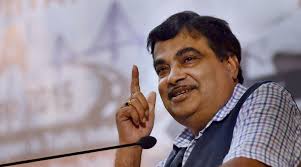The Minister for Road Transport and Highways Nitin Gadkari in a statement on Monday, said that the National Democratic Alliance government will put an electric vehicle policy in place by the end of this year.
According to the minister, an informal group of ministers had come together to prepare a draft vehicle policy and had submitted its suggestions to the cabinet secretary. This group of ministers consisted of Gadkari, finance minister Arun Jaitley, heavy industries minister Anant Geete, environment minister Anil Dave, and minister for power, coal and new and renewable energy Piyush Goyal.
The electric vehicle policy which is due in December 2017 will cover the area of both heavy and light vehicles, ranging from cars to buses. According to Gadkari, there are several Indian firms that are interested in investing in electric vehicles and supporting infrastructure.
Nagpur will be the first city to launch a pilot of electric vehicle transportation and will hopefully be an example that other cities will follow. The government’s constant urging to use electric vehicles has been gradually gaining momentum and is expected to gain even more in the coming months. NITI Aayog, an initiative of the Indian Government, in a report last week recommended financial incentives to electric vehicle manufacturers in an attempt to discourage privately owned petrol and diesel fueled vehicles.
NITI Aayog along with the Rocky Mountain Institute of Colorado made a few suggestions in the report which include, “a manufacturer consortium for batteries, common components, and platforms to develop battery cell technologies and packs and to procure common components for Indian original equipment manufacturers.”
According to this report, if India was to follow this recommendation and adopt electric and shared vehicles, the country could save $60 billion in diesel and petrol. It could also have a significant impact on the environment by reducing carbon emissions by as much as 1 gigatonne by 2030.
Electric vehicle sales are comparatively low in India. Although vehicular sales rose by 37.5% to 22,000 units in the 2016 financial year compared to the 16,000 of the previous year, only 2,000 of these were four-wheelers. This was ascertained by the automobile lobby group, the Society of Indian Automobile Manufacturers.
The Indian government has set a target of 6 million electric and hybrid vehicles to be in use by 2020 under the National Electric Mobility Mission Plan 2020 and Faster Adoption and Manufacturing of (Hybrid &) Electric Vehicles in India (FAME India Scheme). It is offering several subsidies on such vehicles, ranging up to Rs. 29, 000 for bikes and Rs. 1.38 lakh for cars under the FAME India Scheme. The plan is to eventually make this industry economically viable on its own in the future.
The Tech Portal is published by Blue Box Media Private Limited. Our investors have no influence over our reporting. Read our full Ownership and Funding Disclosure →






